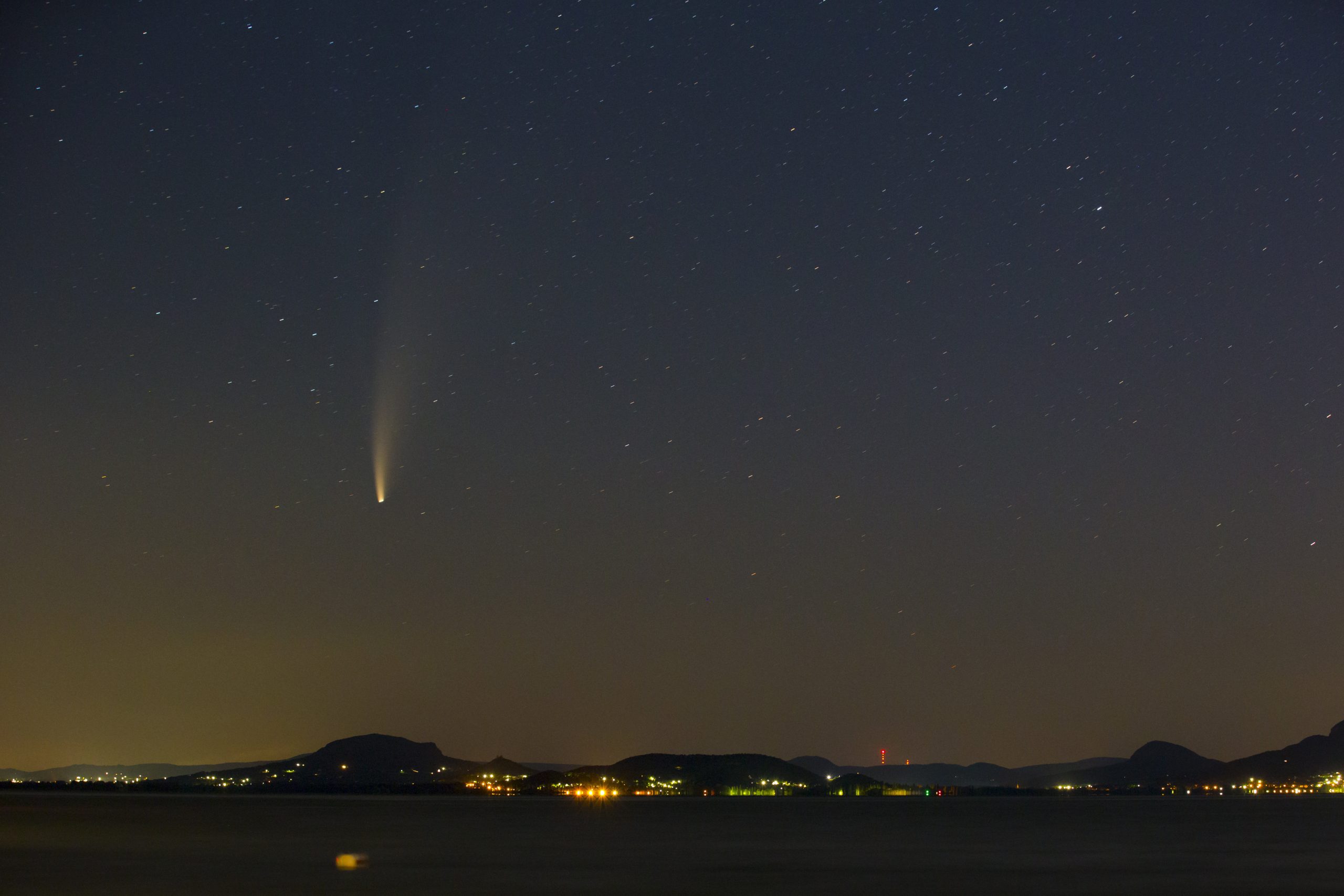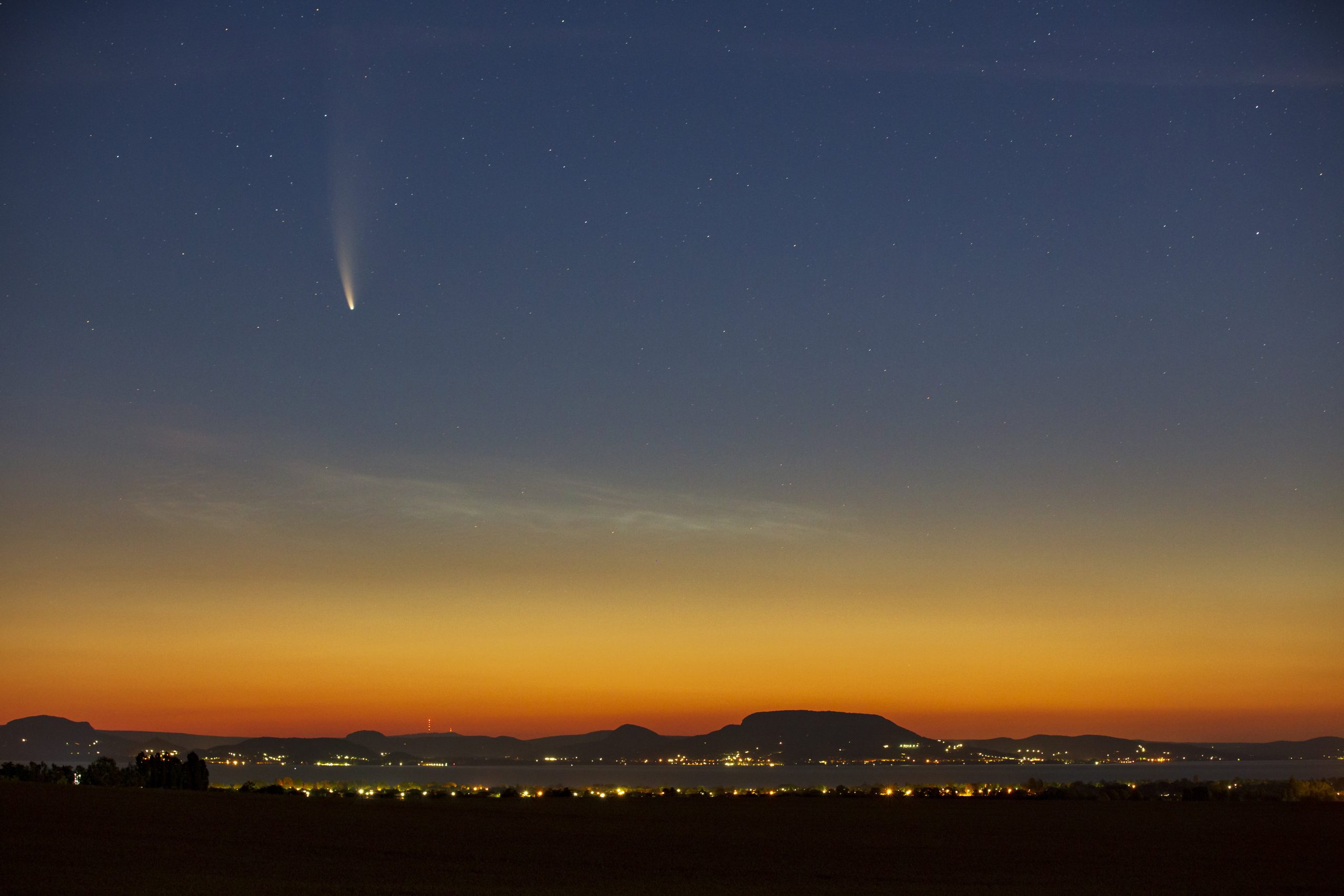
The first comet of the year was discovered in Hungary by astronomer Krisztián Sárneczky on January 2nd at the Piszkéstető Observatory in the Mátra Mountains. The last time a comet was discovered in Hungary (in the given year for the first time) was 36 years ago.
This article was originally written by our sister-site, Ungarn Heute.
The discovery of the comet now known as C/2022 A1 (Sárneczky), is fortunate because it is moving very fast and orbits the sun in the opposite direction to Earth. The celestial object was discovered by Krisztián Sárneczky on the night of January 1-2 with the 60-cm Schmidt telescope of the Piszkéstető Observatory.
Related article
Rare Comet 'Neowise' Passes Earth Once in Thousands of Years, Photographed Above Hungary
The comet named ‘Neowise’ passes Earth every five thousand years. The rare celestial phenomenon is happening now and it was detected in Hungary on Tuesday at dawn. Hungarian news agency MTI‘s photographers Tamás Sóki and Péter Komka captured images of the comet in Pécs and above Lake Balaton in the clear July sky. Although the […]Continue reading
The astronomer was investigating a previously unseen nebulous spot in the constellation “Lynx” and took three photos with an exposure time of 104 seconds each. The astronomer wrote on his social media page that he had already noticed a small planet with a diameter of 30-40 meters near Earth in the third triple image.
This became the celestial body with the sign 2022 AC, which passed Earth 1.1 million kilometers away on December 28th and already moved away at the time of its discovery.
According to the researcher’s report, around half past three in the morning he also noticed a small planet with a diameter of 70 meters, which Polish astronomers had also later sighted. From these images and other measurements, he realized that he had discovered a previously unknown, extremely small comet.
I have been coming to Piszkéstető for 24 years, where I have been observing the sky every clear night for a year. Basically, I am looking for near-Earth celestial bodies and minor planets, but it doesn’t bother me at all that I found something completely different,”
the Hungarian astronomer told RTL News afterward. Since the discovery, other astronomers have already taken images of the object, confirming the discovery.
The astronomer then reported his discovery to the Minor Planet Center (MPC). This is the requirement namely that the comet be named after its discoverer. Since then, the MPC employee has posted it on the page that lists possible comets.
Related article
"Incredibly Bright" Bolide Shoots Over Hungary Tuesday Night
The webcams of Időkép recorded the blazing fireball shooting through the night sky for a total of seven seconds.Continue reading
At the time of discovery, the comet was only 60 million kilometers from Earth, whereas an average comet is usually 750 million kilometers or even farther away when it is discovered. The comet came closest to Earth at about 9:20 p.m. Saturday night when it was estimated to have passed 47.6 million kilometers away.
Today, the comet is thought to have made only a short-lived visit to the solar system and may not return to our planet for thousands of years,”
Sárneczky added.
Krisztián Sárneczky is the third Hungarian astronomer after György Kulin (1942) and Miklós Lovas (five discoveries between 1942 and 1986) after whom a comet was named.
Source: Origo
Featured image: illustration / C/2020 F3, the NEOWISE comet, photographed in the dawn sky from Balatonmáriafürdo on June 14, 2020. Photo by Tamás Sóki/MTI


